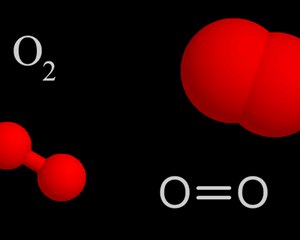A previous attempt by a different group of engineers used pulsed electromagnets. This, though, required both high pressure, which is expensive to create, and the electromagnets themselves, which are costly to buy and costly to run. Dr Vetrovec intends to perform his version of the trick at atmospheric pressure, and using permanent magnets. Both of these modifications greatly reduce power consumption. In fact, the device's only moving part is the blower which pushes air through it.
此前,另一組工程師嘗試使用脈沖電磁鐵。不過這需要兩種高壓,成本很高,電磁鐵本身的購買和運行成本就很高。維特威克博士想要在大氣壓力下使用永磁體來實現他的這種把戲。這兩種改進都大大降低了功耗。事實上,這個裝置唯一的活動部件就是推動空氣通過的鼓風機。
It's a gas
它是一種氣體
The magic extra ingredient Aqwest brings to the party is an array of structures called microchannels. These are tubes less than a millimetre in diameter that are intended to carry liquids or gases. Crucially, their narrow bores ensure the laminar flow of any fluid passing through them. Translated from physics-speak, this means they cause no turbulence, and therefore no mixing of their contents. That allows them to act as gas separators in the firm's device.
Aqwest給派對帶來的其它神奇的東西是一組被稱為微通道的結構。這些管道直徑小于一毫米,用來運送液體或氣體。最重要的是,它們狹窄的孔確保了任何流體都能通過它們的層流。從物理學的角度來說,這意味著它們不會引起湍流,所以里面的物質就不會混雜在一起。這一點使得它們可以在該公司的設備中充當氣體分離器。

On the face of things, the initial results do not look that impressive. Prototypes yield a concentration increase of around 0.1% per passage, though Dr Vetrovec thinks his team can raise this to 0.4%. The key, though, is the repetition. Like the tale about a vizier who asked his king, as a reward for some service, for a grain of rice on the first square of a chess board, two grains on the second, four on the third, and so on, the oxygen concentration rises rapidly with successive iterations. Thirty passages at the higher rate would yield a 90% concentration of oxygen—and that would be commercially useful.
從表面上看,最初的結果并沒有那么令人印象深刻。雖然維特威克博士認為他的團隊可以將濃度提高到0.4%,但其原型只給每個通道的濃度增加了約0.1%。然而,關鍵在于反復。就像有個故事說的那樣,一個大臣向他的國王要一粒米作為某種服務的獎勵,在棋盤的第一個方格上要兩粒米,在第二個方格上要四粒米,以此類推,氧氣濃度隨著不斷的迭代迅速上升。以更高的速率進行30次傳代將產生90%濃度的氧氣——這將具有商業價值。
Whether this approach actually will prove cheaper than the established alternatives, and whether, if it does, that will really save fossil fuels' bacon, remain to be seen. But some versions of a green-energy future involve the use of a lot of hydrogen, so better ways of generating that gas are always welcome. In the meantime, oxygen's many other users would surely welcome a cheaper source of supply. The idea of doing this with magnets is attractive.
這種方法是否真的會比現有的替代方法成本更低?如果是,那么它是否真的能夠節約化石燃料,這一點還有待觀察。不過,一些綠色能源在未來的改版會涉及到大量的氫的使用,所以更好的制造氧氣的辦法總是受歡迎的。同時,氧氣的很多其它使用者肯定會歡迎更便宜的供應來源。使用磁鐵來制造氧氣的想法很有吸引力。
譯文由可可原創,僅供學習交流使用,未經許可請勿轉載。











